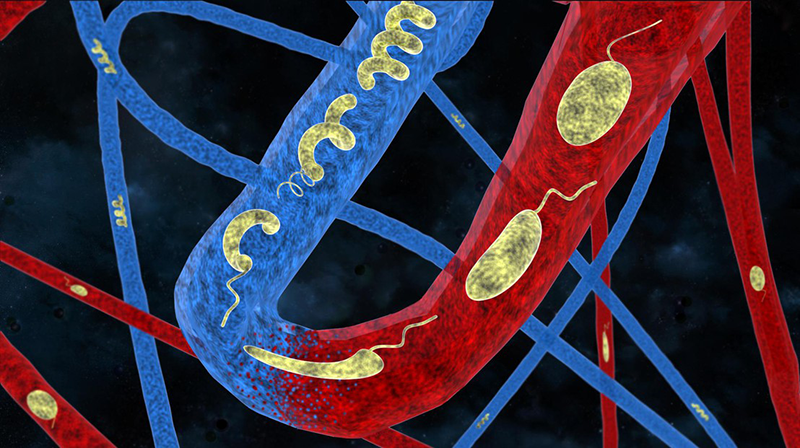Delivering drug precisely to the target area of the body has always been a challenge. But that might soon change. One day we may be able to ingest tiny robots that deliver drugs directly to diseased tissue, thanks to research being carried out at Ecole polytechnique fédérale de Lausanne (EPFL) and ETH Zurich in Switzerland.
Related This Creepy Wearable SkinBot from MIT Does Medicine by Crawling Across Your Skin with Suction
A group of scientists at EPFL and ETH Zurich have developed microrobots that can change shape depending on their surroundings. Modeled after bacteria, these fully biocompatible and flexible microrobots swim through vessels and get to hard-to-reach areas of the human body. This new invention could pave the way for advanced drug delivery in the future.
The research team was led by Selman Sakar at EPFL and Bradley Nelson at ETH Zurich. Because they are able to swim through fluids and alter their shape according to needs, these tiny robots can pass through narrow blood vessels and intricate systems without compromising on speed or maneuverability.
We tend to think of robots as bulky machines with complex systems of electronics, embedded sensors, and batteries. But looking through a microscope, a robot can be something entirely different.

Creating miniaturized robots is very difficult, so the scientists turned to an origami-based folding technique. They made the microrobots from hydrogel nanocomposites that contain magnetic nanoparticles allowing them to be controlled via an electromagnetic field, reports EPFL.
“Nature has evolved a multitude of microorganisms that change shape as their environmental conditions change,” said Mr. Nelson “This basic principle inspired our microrobot design. The key challenge for us was to develop the physics that describe the types of changes we were interested in, and then to integrate this with new fabrication technologies.”
Related How Microneedle Systems Could Provide Safe, Effective and Painless Drug Delivery
Mr. Sakar said the special composition and structure of their robots allow them to adapt to the characteristics of the fluid they are moving through. “For instance, if they encounter a change in viscosity or osmotic concentration, they modify their shape to maintain their speed and maneuverability without losing control of the direction of motion,” he said.












